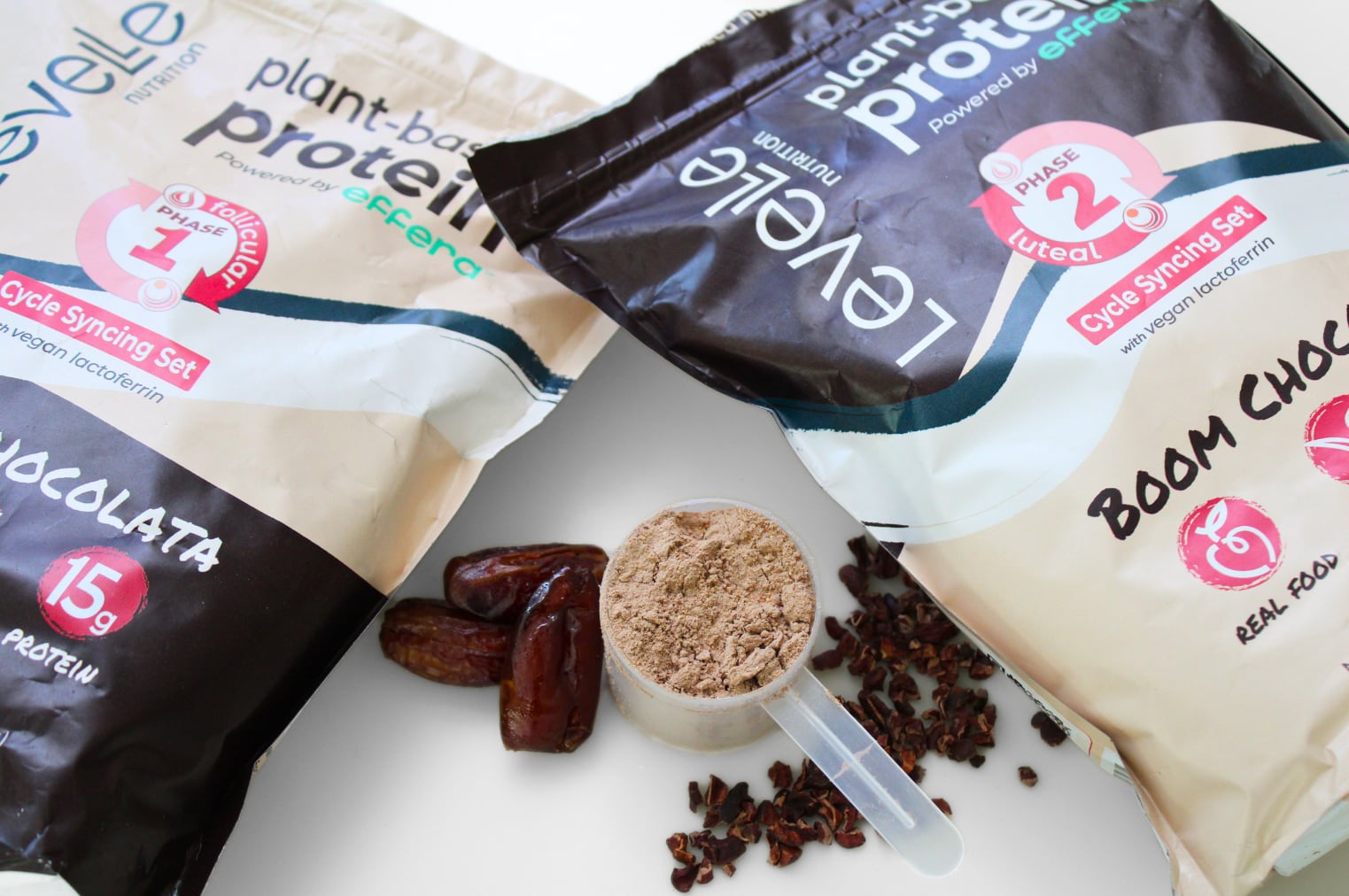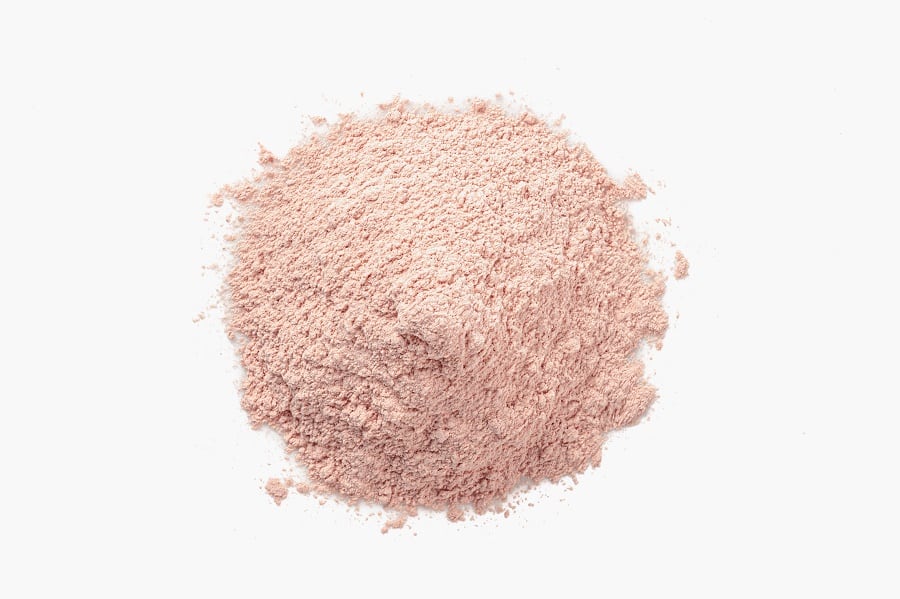Hormones, cycles and female physiology have long been treated as afterthoughts in sports science – but a growing wave of research and awareness is rewriting the playbook.
Levelle Nutrition’s new Cycle Syncing Protein is being positioned as the first-ever protein powder tailored to the shifting nutritional needs of menstruating women. Co-Founder and CEO Linda Alvarez sat down with FoodNavigator-USA to discuss what it means to break new ground in this space, how cultural and scientific momentum are aligning in women’s health and why their two-phase formula could help redefine performance and everyday nutrition for women.
FoodNavigator-USA (FNU): How significant is it to be first-to-market in this space, and what responsibility comes with that?
Linda Alvarez (LA): “Being first-to-market is significant because it establishes a new category in sports and functional nutrition – one that recognizes that female physiology is not just a scaled-down version of male physiology. The responsibility lies in making sure we aren’t over-promising and under-delivering.
“We aimed to make our formulations physiologically relevant based on the existing evidence, but we acknowledge that research is limited. Historically, studies have varied widely in how they define cycle phases, measure hormone levels and account for individual variability, making it difficult to draw clear conclusions. Researching what’s happening in women’s bodies is one level, while investigating how women respond to cycle-syncing nutrition is an additional step beyond that. We’re hoping that through our product, we can gain subjective feedback from customers, while also creating space for an ongoing conversation about cycle syncing.
“Being first means taking a risk. In fact, we did a limited run with the expectation that we may want to tweak the formulations based on feedback, something we have done in the past with our popular energy gels. We frequently say Levelle Nutrition is made for women, by women; we built our company through customer discovery and product feedback, a practice we will continue with each product we bring to market. But, in the meantime, by using nutrient-dense real foods, focusing on taste and digestibility, and incorporating effera, we formulated a product that we are proud to stand behind.”
FNU: The press release announcing Levelle Cycle Syncing Protein’s launch notes a “long-overdue shift” in the study of female biology, with women now comprising over 50% of new clinical trials. How do you see this cultural and scientific momentum impacting demand for products like yours?
LA: “It’s an exciting time. For decades, women were underrepresented in clinical research, and as a result, products and guidelines weren’t designed with our biology in mind. That’s changing. Greater representation of women in clinical trials and other research not only improves health outcomes, it also expands the pool of sex-specific data that can inform product development.
“But the shift isn’t just scientific. Culturally, women’s sports are having a major moment, with record levels of both participation and viewership. When we first started Levelle, the idea of sex-specific nutrition was still novel. That’s not surprising, given that most people learn about sex hormones only in the context of reproductive health, even though sex differences exist all the way down to the cellular level.
“As women begin to see themselves reflected in research, and as awareness of hormonal effects grows, we expect to see a rise in demand for products designed to meet women’s unique physiological needs. Women are the largest consumers of supplements (CRN, 2020), and we’re already seeing increased demand for functional foods and precision nutrition tailored to them.”
FNU: With the rise of GLP-1 weight loss drugs and increased consumer focus on muscle health and metabolic support, what role do you see Cycle Syncing Protein playing?
LA: “GLP-1 weight loss medications can suppress appetite, which makes it harder for individuals to meet their daily protein and micronutrient needs. This can compromise lean muscle mass, recovery and metabolic health. Additionally, there is some evidence that GLP-1 medications can hinder iron absorption. Women are more at risk than men of both underfueling and low iron.
“Our Cycle Syncing protein is an easy way to incorporate some of those macro and micronutrients. In particular, its high iron content is complemented by the inclusion of effera, a vegan, human-equivalent lactoferrin that supports iron absorption and utilization.
“Beyond helping to meet protein and carbohydrate needs, the formula is aligned with the growing consumer shift toward clean-label, evidence-backed products. Women are increasingly reading ingredient lists closely to ensure their fuel is both effective and free from unnecessary additives. Cycle Syncing Protein is free from stimulants, artificial sweeteners, and GI-disrupting fillers. By integrating [the] menstrual phase-specific nutrition into a clean, functional format, it reflects the broader movement toward holistic health and personalized, adaptive nutrition.”
FNU: Why has it taken so long for the industry to design something around women’s unique hormonal cycles?
LA: “The delay is largely due to research bias and the complexity of studying cyclical physiology. For decades, women – particularly those of reproductive age – were excluded from trials due to perceived risk. Additionally, hormonal variability was considered a ‘confounding factor’ rather than a basic truth that could provide essential information for women’s health and performance.
“But the effect of social bias and body image expectations also play a significant role. There has been a concept that men fuel and train, while women diet and exercise. Many still associate protein supplementation with ‘gym bro’ culture, and for years there was a concern that such supplementation would cause women to ‘bulk up.’ Correspondingly, only 3% of sports nutrition products were dedicated to women, compared to 88% for men, according to SPINS. Of those made for women, 64.3% focused on weight loss.
“In the early days, we were often asked whether women truly needed nutrition tailored to their physiology. Since Covid, rising awareness around wellness has helped products like protein powders expand from the sports nutrition niche into the broader active nutrition space. But women-focused products remain an underserved market, and those addressing cycle syncing or specific life stages are virtually untapped. This is an emerging category with the potential to redefine performance nutrition, and the brands that commit now will be the ones to shape it.”
FNU: Your product is divided into two phases. Can you walk us through how this approach supports performance and recovery compared to generic protein powders?
LA: “Our protein powder is intentionally divided into two distinct phases – days 1-14 (follicular phase) and days 15–28 (luteal phase) – to match the body’s shifting hormonal landscape and nutrient needs across the menstrual cycle.
“In phase 1, during the follicular stage, estrogen and progesterone levels are relatively low, with estrogen rising as the phase progresses. Subsequently, insulin sensitivity is naturally higher. This is the time when the body is most efficient at using carbohydrates for energy and recovery. Our Phase 1 formula includes a higher carbohydrate content to help replenish glycogen stores and support endurance, especially important after menstruation when energy levels may be lower. We also incorporate added iron to support oxygen transport and overall performance capacity.
“As the cycle moves into phase 2, the luteal phase, progesterone levels rise and the body shifts toward a higher reliance on fat and protein metabolism. Recovery demands also increase. Here, our formulation provides slightly higher protein content alongside functional nutrients that support muscle health. We’ve also included micronutrients to support fluid balance, thermoregulation, and inflammatory responses.
“A key innovation in both phases is our use of effera. By aligning macronutrients, micronutrients and functional ingredients with the body’s natural cycle, our two-phase approach offers a level of precision and personalization that generic protein powders cannot match.”
FNU: How do you see cycle-syncing nutrition benefiting women beyond athletic contexts?
LA: “Our vision has always extended beyond sport. We’ve found that many women hesitate to call themselves athletes, but we believe all women deserve to fuel their bodies with quality, real-food nutrition. The core idea is that our products are designed for sport but gentle enough for daily life.
“Diet culture has long conditioned women to focus on restriction, rather than fueling. That’s why our formula contains both protein and carbs, along with a focus on iron availability. The result is a product that supports macro and micronutrient needs regardless of performance level.”
FNU: The Helaina effera technology is fascinating. How does using a human-identical protein expand what’s possible?
LA: “Bovine lactoferrin matches only about 70% of the human DNA profile, while effera is close to a 100% match – and of that 30% matters. Human bodies have receptors built specifically for human lactoferrin. Helaina’s 2024 safety study found no change in antibodies after supplementation with effera, while there was an increase after bovine lactoferrin, suggesting the body recognizes effera as its own.
“It’s also vegan, making it accessible to those on plant-based or dairy-free diets. Through lab trials, effera has been shown to break down into the same beneficial peptides as mother’s milk, meaning it doesn’t just look the same – it acts the same.”
FNU: Cycle syncing can sound technical. How do you make the concept approachable?
LA: “We use technical terms like ‘follicular’ and ‘luteal’ phases, but always pair them with simple labels like ‘Phase 1’ and ‘Phase 2.’ We aim for clarity without condescension, and provide links to the research for those who want to learn more. Our messaging is about making women feel empowered and informed, without overwhelming them.”
FNU: Which sales channels are you prioritizing for launch?
LA: “Direct-to-consumer allows us to control education and messaging, which is critical for a novel product. We’re also working with sports dietitians, nutrition experts, and coaches, and focusing on authentic feedback from real women, rather than traditional influencer marketing.”
FNU: For other entrepreneurs looking to address overlooked areas in women’s health, what’s the biggest lesson from your launch?
LA: “Listen to your audience, and be ready to pivot. One of the first questions we got after launch was, ‘When will the menopause version be available?’ That showed us there’s both demand and excitement for targeted nutrition. The lesson? Ground your product in science, but stay open to feedback and new directions. You don’t need all the answers on day one.”




